PinotFile: 8.29 January 10, 2011
|
American Pinot Noir Awards for 2010
I don’t deserve that either” Jack Benny
Heidi Montag Award (Biggest transformation): Carneros (Buena Vista Carneros, Donum Estate, Mahoney Vineyards and others); Foppiano Vineyards; Thomas George Estate (formerly Davis Bynum); J Vineyards & Winery Paris Hilton Award (Most in news): E.& J. Gallo (Red Bicyclette); William Foley Lindsay Lohan Award (Highest alcohol levels; not de-alcoholized): Brewer-Clifton, Aubert Taylor Swift Award (Most hits): Cobb Wines Rodney Dangerfield Award (Can’t get no respect): Santa Cruz Mountains, perhaps California’s least celebrated but great region for Pinot Noir (Mount Eden, Rhys Vineyards, Varner, Windy Oaks and more). Fred Rodgers Award (Most admired): Richard Sanford Bling Award (Most expensive): Domaine Serene Monogram ($225) Justin Bieber Award (Relatively young, making a splash): Alexana Winery, Alysian, Big Table Farm, Bjornstad Cellars, C. Donatiello, Carabella Vineyard, Ceritas, Cherry Pie, Cornerstone Cellars, de Coelo, Evening Land Vineyards, Foursight Wines, Furthermore, Harrington Wines, Heart O’ The Mountain, Kelley Fox Wines, Kokoma, Lucienne, Signaterra (Benziger) SPELL Winery, Three Sticks Wines. Lada Gaga Award (Personality): Lane Tanner
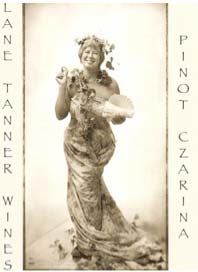 Angelina Jolie Award (Best Package): Belle Glos Chip Off the Old Block Award (William Selyem spin offs carry on the tradition): Anthill Farms, Brogan Cellars, George Wines, Olson Ogden Wines, Papapietro Perry, WesMar, Woodenhead Jimmy Wales Award (Great, obscure producers): Castalia, Clos Saron, Saxon Brown John Steinbeck Award (Best winery blog): Anne Amie, Bruliam Wines, Pinotblogger (Capozzi Winery) Jack LaLanne Award (Legends that are still in top shape): Calera, Dehlinger, Gary Farrell Vineyards & Winery, Hanzell, J. Rochioli, Joseph Swan Vineyards, Ponzi Vineyards, The Eyrie Vineyards, Williams Selyem Black Friday Award (Best deals): Balletto Vineyards, La Crema Winery, Sean Minor Wines, Westrey Wine Co. Steve Jobs Award (Most Innovative): LIOCO Mark Zuckerberg Award (Best winery website): Big Table Farm, Clos Pepe Vineyards, Thomas George Estates (live web cams). Vincent Van Gogh Award (Best labels): Big Table Farm, Cherry Pie, Eric Kent Wine Cellars, Red Car, Windy Oaks
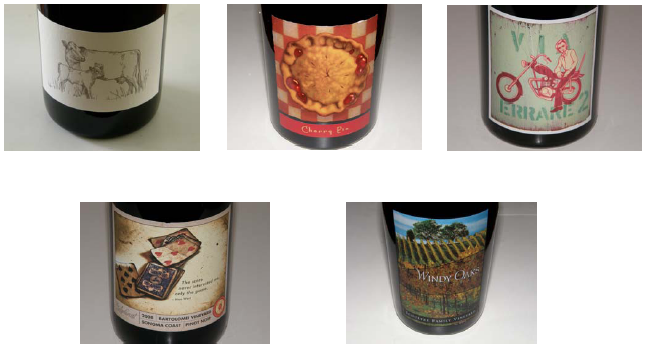 Anna Paquin Award (Winery goes gracefully both ways - great Pinot and Chardonnay): Benovia Winery, Calera, Domaine Drouhin Oregon, duMOL, Freestone Vineyards, Hanzell, Littorai, Mount Eden, Walter Hansel Robert Parker, Jr. Award (Highest scoring Pinot Noir): 2007 Williams Selyem Litton Estate Russian River Valley Pinot Noir (100 pts by Steve Heimoff, Wine Enthusiast, $100). Oscar Wilde Award (Best winery newsletter): Navarro Vineyards, Pisoni Vineyards, Red Car Orson Welles Award (No wine before its time): Kalin Cellars Play Hard to Get Award (Most allocated): Aubert, J. Rochioli, Kistler Vineyards, Kosta-Browne, Marcassin, Privé Vineyard, Rhys Vineyards, Rivers-Marie, Sea Smoke Vineyards Tiger Woods Award (Surprise!): Briceland Vineyards (Humboldt County), Heart & Hands Wine Company (Finger Lakes), Heron Lake Winery (Wild Horse Valley)
A Pinotphile’s New Year’s Resolutions
1. Do not chase a high scoring wine: chase a producer with a broad work of excellence. 2. Drink Pinot Noir with food; Pinot Noir is a food groupie. 3. Ignore vintage hype, winemaker hype, retailer hype, wine press hype. Forget about scores. Trust your own palate. 4. Support small family owned boutique Pinot Noir producers. Visit them and give them some love. Volunteer to work crush. 5. Pay attention to alcohol percentage and adjust your intake accordingly to stay within the guidelines of moderation. 6. Buy in 3s - 1 to drink now, 1 to drink in 1 year, and 1 to drink in 3 to 5 years. 7. Don’t be a label kisser, score chaser or cult worshiper. 8. If you get a corked wine, demand a replacement. 9. Never, ever be intimated by a winemaker; they welcome your criticism. 10. Don’t be afraid to decant young wines. Let your Pinot Noir breath; Pinot Noir needs time to open in the glass and no other wine changes so constantly in the glass. 11. Don’t equate price with quality or quality with price. 12. Attend at least one Pinot Noir festival a year. 13. Read the PinotFile religiously. 14. Embrace Pinot Noir in all of its styles, variations and origins. 15. Drink Pinot Noir at 58 to 65 degrees, especially if alcohol is above 14.5%. 16. Look to Oregon if you want lower alcohol. 17. Buy more magnums. The wine ages better, tastes better and the impressive bottle is more celebratory. 18. Promise not to spend more money on wine futures than on your child's futures. 19. Avoid swirling and sniffing your water glass at dinner parties.
Chardonnays I Swooned Over in 20102008 Alysian Cresta Ridge Vineyard Taurin Block Russian River Chardonnay 14.1% alc., 378 cases, $38. Light straw clear color in the glass. Fresh aromas of white stone fruits, butterscotch and buttered toast. Delicious and persistent moderately rich mix of flavors including pear, white peach, green apple, biscuit and maple syrup framed by lively acidity with a subtle note of oak in the background. Uncommon tenacity of flavor for a Chardonnay. Everything is singing in harmony and this wine is just my style. 2007 Brewer-Clifton Sweeney Canyon Sta. Rita Hills Chardonnay 15.2% alc., 120 cases, $70. Light straw color in the glass. Distinctive aromatic profile of dried herbs, candle wax and cut flowers. Lovely flavors of peaches and nectarines with a faint note of oak in the background. Slightly creamy and more demure than the Mount Carmel and Rancho Santa Rosa bottlings with a better fruit and acid balance. No sign of alcohol. 2007 Buena Vista Carneros Ramal Vineyard Estate Vineyard Series Carneros Pinot Noir 14.2% alc.,, 3,807 cases, $32, screw cap. Aromas of lemons pears, buttered toast and roasted nuts. Very tasty essence of lemon curd, white peach, pear and a touch of allspice. Beautifully composed with a welcoming snap of acidity on the finish. A “go to” California Chardonnay that has all the spunk you can ask for. 2008 Fess Parker Ashley’s Vineyard Sta. Rita Hills Chardonnay 14.3% alc., $22. Straw color in the glass. Nicely appointed nose featuring scents of green apple, cinnamon spice, and a hint of toasty oak. Very tasty essence of white stone fruits in a seamless style with a well-proportioned acid backbone. Very clean on the finish, drawing the drinker to take another sip. California Chardonnay at its finest. Because of the name, wine geeks may not take the winery seriously, but I am here to tell you that this is a label worth exploring for all its varietals. 2008 Freestone Vineyards Sonoma Coast Chardonnay 13.5% alc., 800 cases, $55. Light straw color and clear in the glass. Demure scents of spiced apples and white peaches. The apple, peach, citrus and pear flavors flood with mouth with flavor, but the wine has an appealing modesty. Slightly viscous in texture, there is no oak intrusion, and bright acidity brings the fruit into focus. A very classy Chardonnay with modest alcohol that adds to the appeal. 2008 Freestone Vineyards Pastorale Vineyard Sonoma Coast Pinot Noir 13.5% alc., 50 cases, $100. Light golden straw color in the glass. Needs some coaxing to open in the glass, but over time offers an alluring perfume of apple pan dowdy, Asian pear and buttered toast. Similar in flavor profile to the Sonoma Coast bottling, but with added notes of roasted nuts, minerals and lemon zest. A sneaky wine that picks up intensity and interest with swirling in the glass and provides a full-on explosion of flavor after 30 minutes. A subtle creaminess and hi-tone acidity add to the appeal. Worth the tab for serious Chardonnay aficionados and in the same class as other top producers of California Chardonnay such as Peter Michael, Littorai, Kistler, Hanzell and Ramey. 2007 Hanzell Sonoma Valley Chardonnay 14.3% alc., 2,777 cases $70. One-third fermented in French oak and two-thirds in stainless steel. Pale straw color in the glass. Delicate, yet complex aromatic profile that picks up intensity with time in the glass to reveal scents of white peaches, crushed stones, toasted brioche and lemon tart. This high-collared wine strikes a perfect balance between welcoming finesse and impressive finishing strength and persistence. Smoothly textured with a well proportioned grip of acidity and a very appealing underlying minerality. Flavors of golden apple, white stone fruits and subtle toast develop strength and brilliance with air time. If you must open a bottle now, decant. A very classy wine that will hold its own against many Grand Crus white Burgundies. 2007 LIOCO Demuth Vineyard Anderson Valley Chardonnay 13.8% alc., 225 cases, $35. Fermented in stainless steel (no oak). Terrific aromatics flashing ripe pears, green apples, warm cookies and graham. The flavors are reminiscent of a warm apple tart, with hints of apricot and toast. Smooth and creamy with a lively citric acid lift on the back end. Fresh and very bright. I drank at least a case of this last year. 2007 Morlet Family Vineyards “Ma Douce” Sonoma Coast Chardonnay 360 cases, $70. Moderately deep straw yellow color in the glass. Piercing aromas of lemon curd, yeast, roasted nuts and smoky oak. Plush and luxurious on the palate, yet vibrant with acidity and minerality. Enticing flavors of white peach and buttered brioche linger on the refreshing finish. A very impressive wine that will still pumping out bright flavor three days later from an opened and re-corked bottle. Decant this wine if you pop the cork now. One of the greatest California Chardonnays to cross my lips. 2007 Peirson-Meyer Charles Heintz Vineyard Sonoma Coast Chardonnay 14.4% alc., 450 cases, $55. Moderately deep straw color in the glass. The aromas really come at you over time in the glass showing lemon curd, creme brulee, vanilla wafer and wet stones. Flat-out delicious flavors of golden apple, pear, melon and freshly buttered brioche that are palate staining and hang around on the finish for what seems like a minute. Very smoothly textured with perfect integration of oak. This wine would make any Frenchman green with envy. One of my favorite California Chardonnays, and the one I buy by the case and magnum when my wife isn’t looking over my shoulder. 2007 Pfendler Vineyards Estate Grown Sonoma Coast Chardonnay 14.1% alc., $38. A marvelous wine style perfectly to my preferences. Complex nose of buttered popcorn, honey, lemon zest, honeydew and spiced apple. Delicious flavors of pear tart and baking spices. A demure wine that is beautifully proportioned with a lasting and aromatic finish. Additional excellent California Chardonnay priced right: 2007 Bjørnstad Sonoma County Chardonnay ($25) 2007 Bonterra Vineyards Mendocino County Chardonnay ($28) 2009 Calera Mt. Harlan Chardonnay ($28) 2008 Fogdog (by Freestone Vineyards) Sonoma Coast Chardonnay ($35) 2008 J Vineyards Russian River Valley Chardonnay ($28) 2007 Lucas & Lewellen Santa Barbara County Chardonnay ($16) 2007 LIOCO Sonoma County Chardonnay ($19) 2007 Melville Estate Sta. Rita Hills Chardonnay ($20) 2007 Sebella (by Hanzell) Sonoma Valley Chardonnay ($36) Other California producers of Chardonnay worth pursuing: Benovia Winery, Clos Pepe Vineyard, The Ojai Vineyard, Sea Smoke, Au Bon Climat, Ambullneo, Paul Lato, Rhys Vineyards, Windy Oaks, Mount Eden, Rivers-Marie, Aubert, Ramey, Peter Michael, Kongsgaard, Marcassin, Kistler, duMOL, Littorai, LaFollette, Hirsch, Williams Selyem.
Newsworthy Headlines & Trends in 2010Vintage 2010 In Northern California, low spring temperatures and an April frost in some regions delayed bud break, damaged vines and fostered mildew. The summer remained very cool delaying vines’ growth and spawning bunch rot (the second lowest temperatures in Napa and Sonoma counties in 50 years). A late August to mid- September heat wave (temperatures soaring over 100º F) scorched grapes and damaged vines, and rain at harvest created mold that severely damaged some vineyards, especially those planted to Chardonnay. The result was a very late and shortened harvest with reduced yields. Additional bad news was that grape prices were markedly reduced (grapes selling at close to 70 percent less than a few years ago). Sugars will generally be down resulting in lower alcohol levels and the wines may be spotty in quality. This will be a year, like 2008, to carefully choose your wine purchases from Northern California. The Central Coast had an extended growing season as well and yields were also down. The marine influence tempered the August heat spike in the Sta. Rita Hills and Santa Maria Valley, but the October rains created challenges. For Oregon, a wet spring and cool summer delayed ripening by two to three weeks. The later days of the growing season saw slightly cooler than normal temperatures with few heat spikes. Harvest was late, and many vineyards were devastated by feasting birds, but the quality of harvested fruit was excellent. The finished wines should have finesse yet good substance with lower alcohols and acids on the higher side for age ability. In New Zealand, the 2010 vintage was reduced in quantity, helping to relieve some of the problems created by the very large crops in the previous two vintages, but predictions for 2011 are for another large crop. Prices for New Zealand wines have been down due to reduced global demand, many wineries are holding a large inventory of previous vintages, and New Zealand Winegrowers, the marketing arm of New Zealand, is urging growers to reduce yields in 2011.
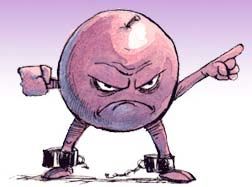 Furor over Direct Shipping America’s 6,700 wineries and media have been focused on House Resolution H.R. 5032, the Comprehensive Alcohol Regulatory Effectiveness (CARE) Act. The supporters of the resolution have been alcohol wholesalers who want to maintain tight control of sales, while opponents of the resolution, including wineries, distillers and breweries, argue that the bill would prevent consumers from buying labels that are not sold within state. A study by the Ship Compliant and Wines & Vines Industry Database reported that 2.6 million cases were shipped direct-to-consumer for the year ending in March 2010, or about 1% of the total annual United States wine sales of 251 million 9-liter cases. This number represents a tiny portion of wine sales, but accounts for a significant percentage of small winery revenues. Two or three large wholesalers control what wines are available in their state, and the ten largest wholesalers control more than half of the United States market. Small wineries continue to push for the Model Direct Shipping Bill as outlined on the www.freethegrapes.org website. 53,000+ letters were sent to Congress by consumers in 2010 opposing H.R. 5034. The bill was not voted on by Congress during its lame-duck session at the end of 2010, but opponents are concerned that the bill will be introduced under a new bill number in 2011.
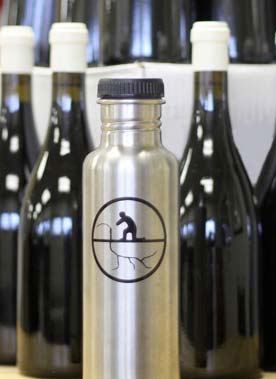 “Natural” Wine Movement Outspoken advocate Alice Feiring defines natural wines on her website (www.alicefeiring.com) as follows: “Nothing gets added to the wine and nothing gets extracted. Grapes, maybe a splash of sulfur dioxide. (1) Assume minimal chemical to no chemical farming. No Round Up. (2) Wine with grapes and nothing else added. No yeast additions. (3) No forceful machinery to alter taste, texture or alcohol level of the wine. (4) A little sulfur dioxide at bottling, (5) No new oak.” In other words absolutely no detractive interventions in the vineyard and in the winery. The controversy about natural wines centers on the issue of whether these wines are superior in that they more truly reflect their terroir. In Sonoma County, winemaker Kevin Kelley (Salinia, LIOCO) and spouse Jennifer have founded the Natural Process Alliance (NPA). His winemaking crew employs absolutely no winemaking additions or subtractions. No watering back, acid adjustment, enzymes, chaptalization, de-alcoholization, or fining and filtering. The wines have no sulfur or preservatives and are for immediate drinking, and offered in refillable stainless-steel canteens, not glass bottles, and filled at the winery from a tap. The wines are only available within 100 miles of Santa Rosa.Tasting of the wines is offered from 10:30 AM to 6:30 PM Friday and Saturday or by appointment (707-527-7063) at 3350 D Coffey Lane, Santa Rosa. Value is the New Bling Although Americans are drinking wine at a consistent pace, they are reaching for cheaper wines that offer a favorable quality-to-price ratio. The newly tight-fisted wine drinker has reluctantly forced some Pinot Noir producers to discount their prices, while many others offered significant discounts for multiple bottle purchases and frequently threw in free shipping. The market has been flooded with second upscale value-priced labels from premium producers, providing revenue while protect their main brand. The explosion of negotiants has led to a marketplace filled with solid inexpensive wine. The problem of consumers trading down has been compounded by states raising wine taxes. Excise tax increases were enacted in six states, ranging from 11.5 cents a gallon in New York to 63 cents a gallon in Illinois. Expect more states to follow suit as they attempt to balance budgets in this struggling economy. At this year’s 19th Annual Wine Industry Financial Symposium, a majority of respondents to a survey indicated that it would take three to five years for the wine industry to return to its pre-recession level of profitability. 7-Eleven plans to offer a new line of wine, Cherrywood Cellars, aimed at Millenials that will sell for $8 to $9 a bottle. Their inexpensive wines under the Yosemite Road label have sold well and the pricier Sonoma Crest and Thousand Oaks wines are also big sellers. Starbucks plans to get into the retail wine business as well. Glass Tops Receiving a Following I happen to really like Vino-Seal (Vino-Lok in Europe) glass closures for wine bottles. The closure first appeared at Alcoa’s plant in Germany in 2004 and German and Austrian wineries have been the biggest users. The biggest drawback is the high cost which rivals the best corks ($0.50 to $1.00), although Encore! Glass of California reportedly reduced the price of Vino-Seal to $0.41 each in 2010. Additional disadvantages include a limited number of bottle styles and the potential for reduction as in screw caps because of very low or nonexistent oxygen exchange. Pinot Noir producers who use them include Robert Sinskey Vineyards and Calera in California, and R. Stuart & Co. and Sineann Winery in Oregon.
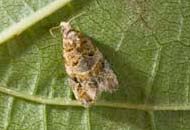 European Grapevine Moth The European grapevine moth (EGVM, Lobesia botrana) was first discovered in the United States in Napa Valley in October of 2009 and presents a serious threat to California’s grape industries. According to University of California Davis, the pest is found throughout Europe, Northern and West Africa, the Middle East, eastern Russia, Japan, and Chile. Vitis vinifera is a preferred host. First-generation larvae feed on flower clusters, second-generation larvae feed on green berries, and third generation larvae feed inside berries and within bunches, resulting in contamination with frass (excrement). Damaged berries attract Botrytis, other fungi, fruit flies and ants. Cultivars with tight clusters such as Chardonnay, Pinot Noir and Zinfandel suffer the most damage. Treatment includes reduced-risk insecticides and predators and parasitoids. A quarantine was imposed earlier this year in several counties including Mendocino, Napa and Sonoma, having an impact on both intrastate and interstate movement of grapes. HOT: white Pinot Noir, vin gris of Pinot Noir, whole cluster, heritage clones, second labels, wood tank fermentation, indigenous yeast fermentation, less or no new oak, “natural” winemaking movement, glass closures, negotiant labels, wine on tap, $100 Pinots, discounts, free shipping, better-quality QPR Pinot, urban tasting rooms, winery social networking, QR label marking, organic farming, exporting wine, Hong Kong wine auctions, California’s Sustainable Winegrowing Program, no-corkage nights at restaurants, burgers, food trucks, unusual ice cream flavors. NOT: heavy bottles, high alcohol, overpriced Pinot, allocations, wax closures, alcohol percentages can’t read without a magnifying glass, interstate shipping restrictions, overblown unfined and unfiltered claims, smoke taint, emerging vineyard pests, birds, collectors unloading overpriced wines, vintage hype or lack of hype, label kissers, binge drinking, exorbitant Burgundy prices, value of vineyards, state wine taxes, winery websites that are poorly laid out and give little or no information and don’t offer labels for download.
Pinot Briefs
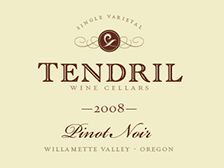 Tony Rynders’ Projects in Oregon Tony Rynders was the winemaker at Domaine Serene for ten vintages. He left under much controversy in 2009, and now is a consulting winemaker to some of Oregon’s newest wineries. His personal project is Tendril, and his consultancies include Sitar, Swiftwater and Cornerstone. Under the Tendril label, Rynders is crafting small lots of Pinot Noir and reds from Washington. 500 cases of a 2008 Willamette Valley Pinot Noir were produced ($48). Sitar is part of Dr. Madaiah Revana’s Oregon label lineup that include Revana Pinot Noir crafted by Lynn Penner-Ash. For more information and availability, visit www.avalonwine.com/Tendril-Pinot-noir-Tony-Rynders.php.
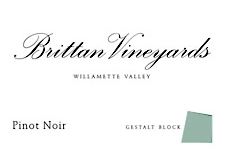 Brittan Vineyards Robert Brittan was the winemaker at Stag’s Leap Winery in Napa Valley for sixteen years and now has his own label as well as consulting for Winderlea and others. He acquired a 128-acre property southwest of McMinnville in 2004 from which he produces wines under his own label. His top bottling is the Gestalt Block, now in its third vintage.
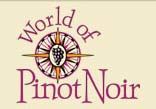 World of Pinot Noir The annual WOPN, slated for March 4-6, 2011, will feature two Seminars of interest. Seminar Combination “A” will include an International Roundtable with Pinot Noir producers from Germany, Austria, Italy, New Zealand, France, Chile and Switzerland. After a gourmet lunch, the Alcohol & Balance segment will provide much debate for panelists Jim Clendenen, Josh Jensen, Adam Tolmach, Michael Browne, Adam Lee and Raj Parr, moderated by Eric Asimov of the New York Times. Seminar Combination “B” features a tasting of wines from the Hirsch Vineyard and includes panelists David Hirsch, Ross Cobb, Ehren Jordan and Ted Lemon, moderated by wine writer Jon Bonne of the San Francisco Chronicle. After a gourmet lunch there will be a Oregon vs California smackdown with Oregon wineries Anne Amie, Dobbes Family Estate, Bergstrom Wines and Evening Land Vineyards facing off with California wineries Adelaida Cellars, Peay Vineyards, Saintsbury and Evening Land Vineyards/California, moderated by Patrick Comiskey. Tickets are now available ($195 per person including lunch and transportation from The Cliffs Resort) at www.wopn.com. Pinot Noir Summit The final showdown of the 9th Annual Pinot Noir Shootout will be held on Saturday, February 26, 2011, at the Hilton San Francisco Financial District. Highlights include an opportunity for attendees to blind judge the top 40 Pinot Noirs and compare the results with the judging panel. Pinot Noir workshops, a Sparkling Wine Reception, and the Grand Awards Tasting & Ceremony at the conclusion of the blind tasting round out the program ($100 per person). A winemaker hosted Pinot Noir Dinner will follow ($125 per person). A special rate is being offered to attendees by the Hilton San Francisco Financial District. Attendance is limited to 300. For tickets and information, visit www.affairsofthevine.com. Monogamy and Alcohol American Association of Wine Economists Working Paper No. 75 by Mara Squicciarini and Jo Swinnen titled, “Women or Wine? Monogamy and Alcohol,” published December 2010. The authors of this study investigated whether there is a correlation between alcohol consumption and polygynous/monogamous arrangements, both over time and across cultures. Historically, a correlation was found between the shift from polygny to monogamy and the growth of alcohol consumption. Cross-culturally, it was found monogamous societies consume more alcohol than polygynous societies in the pre-industrial world. The industrial revolution caused the major and definitive change towards effective monogamy and popularization of alcohol consumption. Changes in alcohol consumption were induced by changes in social structures, economic developments and technological innovations associated with the industrial revolution. Read this fascinating study at www.wine-economics.org. Siduri named “Sonoma County’s Best Winery” The San Francisco Chronicle On Line Poll, fueled by a record number of visitors to Siduri’s warehouse winery, were awarded this distinction. Siduri is open daily for tours and tasting by appointment from 10:00 AM to 3:00 PM (707-578-3882) at the winery at 981 Airway CT, Suites E&F, Santa Rosa. Siduri has made a push into affordable quality wines and is now offering the 2008 Siduri Chehalem Mountains Pinot Noir for $30, the 2008 Siduri Santa Lucia Highlands Pinot Noir for $30, the 2008 Siduri Sonatera Vineyard Pinot Noir for $29, and the 2009 Siduri Sonoma County Pinot Noir (a blend of multiple clones from several well-known vineyards) for $20. Sign up for the mailing list at www.siduri.com. Interested in New Zealand Pinot? Join the mailing list of New Zealand Winegrowers at www.nzwine.com. The new official New Zealand Wine website offers extensive information on New Zealand wine including all events offered throughout the year. Ventura County Wine Trail The Ventura County Wine Trail is a collection of 15 family owned wineries scattered throughout Ventura County. Ventura County Wine Trail Tours are available by reservation Saturday and Sunday from 11:00 AM to 5:00 PM. Tours depart from the Ventura Visitors Center. $85 per person includes a visit to four wineries and a gourmet lunch. Custom wine tours can be arranged by calling Dottie at 805-765-5324. Less than a two hour drive from Los Angeles. Pinot Noir producers include Casa Barranca, Herzog Wine Cellars and The Ojai Vineyard. Visit www.venturacountywinetrail.com. Pigs & Pinot Weekend. I hate to publicize this event as it is so popular tickets sell out within minutes after they are offered. Chef Charlie Palmer brings together culinary and wine elites from around the country to Hotel Healdsburg where wine and food enthusiasts get to experience the creations of over 60 wineries and 10 chefs each year. This year’s participating pork authorities include Nancy Oakes (Boulevard), Bryan Voltaggio (Volt restaurant and Top Chef finalist), Michael Voltaggio (Top Chef Winner) and Gala Dinner winemakers Nick and Zina Bower (Woodenhead), Merry Edwards, Tom Rochioli and Anne Parent (Domaine Parent). I was a judge at this event last year and can tell you it is one of the premier Pinot Noir events of the year. For details and tickets visit www.pigsandpinot.com. Good luck! Free Santa Cruz Mountains Wineries App Released A free iPhone App focused on the wineries of the Santa Cruz Mountains is being offered by 1776 productions (www.1776productions.com). More than 50 Santa Cruz Mountains wineries are featured as well as shops and restaurants. The wineries in the Santa Cruz Mountains are not that easy to find, and this App provides geo-locating sorted by distance, allowing the user to efficiently plan their winery trip. The App is easily found on the iTunes App Store by searching for the region. Eric Johnson New Talley Vineyards Winemaker Johnson joined the winemaking team at Talley Vineyards in 2007 and assumed the head winemaking duties in July 2010. Since its launch in 1986, Talley Vineyards has consistently been one of California’s premier producers of Chardonnay and Pinot Noir. Vineyards on Catalina Island William Wrigley, Jr., bought Santa Catalina Island Co., which owns all developable land on the island in 1919. Alison Wrigley Rusack, William’s great-granddaughter, along with husband Geoffrey Rusack (who own Rusack Winery), plan to establish a winery on the island. The island’s first vineyard has been planted and a tasting room will be added. Millions of dollars have been spent to develop the vineyard which has yielded to date 3,600 cases of Chardonnay, Pinot Noir and Zinfandel. The wines are crafted by winemaker John Falcone at Rusack Winery in Santa Ynez Valley. The 2009 and 2010 vintages of Rusack Santa Catalina Island wine have yet to be released. Rene di Rosa Passed Away in 2010 Rene Di Rosa was a quirky art collector and winegrower who passed away in October 2010. He was one of the first to plant Pinot Noir in Carneros at the Winery Lake Vineyard in the 1960s. The grapes were sold to Robert Mondavi, Acacia and Saintsbury among others. The Di Rosa property of 200 acres in Napa Carneros is part of the Di Rosa Preserve which includes a fascinating art exhibit, the most significant holding of Northern California art in the world including approximately 2,000 works by more than 800 artists. Visit www.dirosaart.org for information about visiting. Winemaking and Viticulture Courses UC Davis Extension has announced the winter 2011 schedule of classes in both online and onsite formats. Visit www.extension.ucdavis.edu/wine. |